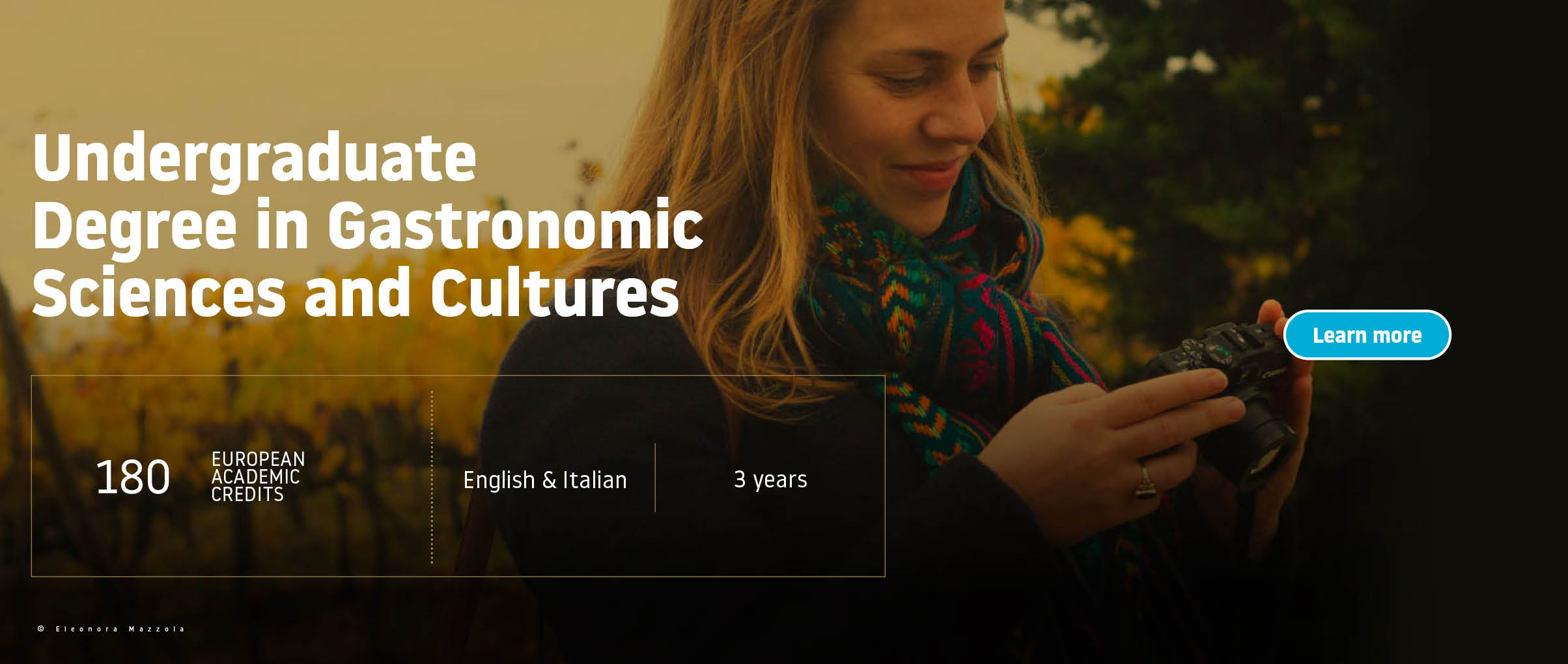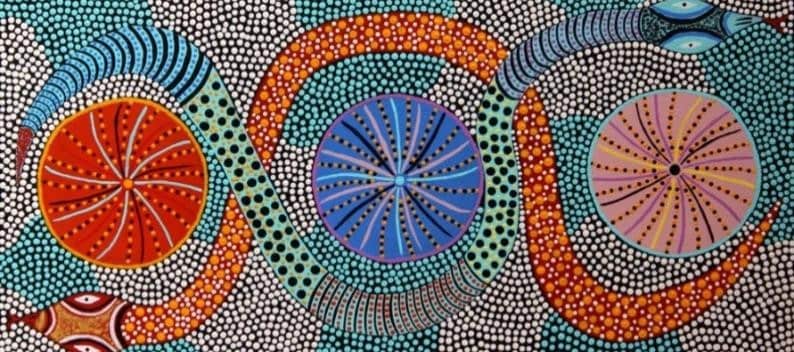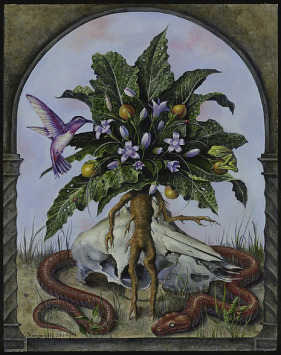The New Gastronome
FEEDING YOUR DREAMS
Your poor diet might be the reason for your nightmares
by Micol Souviney
by Micol Souviney

Dreams are more than idle fancy or the brain’s way of sorting information. Instead, they reflect our subconscious, a mirror of our desires, fears, and wishes. They can help us make decisions, find solutions to problems, and even heal ailments. We can call them messengers since they inspire discoveries. For example, Watson dreamt of the DNA structure as a spiral staircase. Likewise, Dalì’s artwork is heavily influenced by the dream space. “Yesterday.. all my troubles seemed so far away…” This came from a dream too.
If you’ve ever suffered from insomnia or other sleep-related issues, you know how frustrating they can be. But did you know that sleep deficiency is linked to many chronic health problems, including heart disease, kidney disease, high blood pressure, diabetes, stroke, obesity and depression? Our health affects our ability to get a good night’s rest in the same way that our diet (in the Greek sense of “diaita,” which means “way of life”) affects our ability to sleep and dream. In addition, we must consider the influence of external factors such as stress, electronics, environment, and medications when thinking about our slumber.
At the University of Gastronomic Sciences of Pollenzo, we connect food to different aspects of our lives. Naturally, this led me to wonder how it may influence how we sleep and dream. What if we are able to heal, discover and connect to parts of ourselves and society through sleep and dreams? What if we could further understand how to tap into this world through our most common daily ritual of food? Before answering, we must understand our current relationship with the world of dreams and how it has changed over time.
A. D V. E. R. T. I. S. I. N. G

The industrial revolution changed the way we live. It transformed our economic, political, and social systems, even the way we sleep. As described in medieval literature, we used to have multiple sleep cycles meaning that we would experience”first” and “second” sleep in one night. This practice is known as biphasic or polyphasic sleep. Meanwhile, today, with lighting technology developed during the industrial revolution, we are able to carry out tasks during periods of darkness. As a result, we have shifted to a monophasic sleep cycle. Apart from some psychoanalysis, this shift has discounted the value of dreams and their messages.
In monophasic societies, dreams are often seen as having little to no significance relating to conscious life. Contrast that with 90% of the 4,000 polyphasic cultures where sleep and dreams are considered integral to life. In those cultures, the word “dream” does not even exist because dreaming is considered another domain of reality. Polyphasic societies pay particular attention to dream interpretation and dream sharing, creating a significant ritualistic space for the community members to interact with each other. Dreaming is considered a “transpersonal” affair, going beyond the singular experience and seeping into the surrounding community.
Eating well and fasting can help you have more vivid dreams. Research has shown that people who eat organic foods have more frequent and recurring dreams than those who don’t—and the themes in these dreams tend to be flying, risk-taking, sex, and water. On the contrary, people who prefer fast foods report less dream recall and fewer recurring dreams. Obese patients report poor sleep quality and insufficient sleep. Consequently, this triggers further food consumption with a preference for high-calorie foods. So what can be done?
The Mediterranean diet is a way of eating with a focus on fresh vegetables, fruits, legumes, grains, olive oil and nuts. It also emphasizes fish and poultry over red meat and dairy products. The DASH diet is similar in many ways to the Mediterranean diet, but it focuses more on limiting sodium intake. Both of these diets have been shown to improve general health and sleep quality by lowering blood pressure, reducing inflammation and increasing insulin sensitivity—which can lead to better sleep overall, and more dreams.
Fasting also has been utilized since ancient times to induce vivid dreams. In many cultures, fasting is a time of reflection and introspection, and this can help you tap into your inner world. The body is healing during this time, so it makes sense that the mind would be doing some healing as well. Intermittent fasting, with shorter periods of food deprivation, can generate similar effects.
Certain populations use plants and other substances to stimulate dreams. For example, the dreamer may place the material under their pillow, ingest it as is, or prepare a decoction or blend to stimulate dreams. There are a lot of different plants that can be used for oneiric purposes, and each continent and population has developed its own preparations and rituals for this purpose. Many of the substances used in these preparations contain alkaloids—naturally occurring compounds that contain one or more nitrogen atoms. Some alkaloids you may be familiar with are piperin, contained in pepper, and capsaicin found in chili peppers. Alkaloid compounds have a similar structure to some brain hormones like serotonin and noradrenaline. For example, serotonin is a precursor to melatonin, a hormone responsible for your sleep cycle. Interestingly enough, 95% of the serotonin produced in the body is found in the gastrointestinal tract, highlighting the important role that diet plays in our health.
With lucid dreaming, you can control your actions and environment to a certain extent. This, too, is an ancient practice. Learning to lucid dream takes some training. However, you can achieve it by practicing different techniques. Firstly, ensure you have plenty of REM sleep. Secondly, practice “reality checks,” such as asking yourself if you are dreaming or looking at your hands (these will look strange in your dream). These actions will appear in your dreams and help you gain lucidity. Finally, taking substances such as mugwort (Artemisia douglasiana) and blue lotus (Nymphaea caerulea) can help you achieve awareness in the dream space. Lucidity can help people suffering from depression by introducing new skills and thought patterns.
A common practice in ancient Greece was “dream incubation.” This involved going to a temple dedicated to a deity or supernatural being, where participants would sleep and be visited by the god or goddess in their dreams. The dream visitors would then help them heal or solve problems that afflicted them in their waking life. For example, chamomile (Matricaria recutita), which you might enjoy before bed, was often prescribed to templegoers to incite healing dreams.

Photo credit: Trust for public land
The Saguaro (Carnegiea gigantea) is a plant that has been used for centuries by the Native Americans in the southern United States area. The O’odham tribe people collect this fruit, and during their annual rain ceremony, held in July, they consume cactus wine made from its fruit or syrup. The effects of consuming this drink are attributed to a supernatural origin; it is also known to produce feelings of inebriation and dreams. These dream-like states have inspired many songs, including the dream song.
A. D V. E. R. T. I. S. I. N. G
In the Australian outback, there’s a bush that has been used for over 40,000 years to induce an altered state of consciousness called “The Dreaming.” The ancestors of the Aborigines used it in ceremonies and rituals to communicate with their Gods. It’s the longest continuous use of a psychoactive substance in the history of humankind.

Photo credit: Mind Medicine Australia
In Europe, Mandragora officinarum, aka Mandrake, has been used for ritual, inebriating, and medicinal uses. You might recognize the name if you are a Harry Potter fan. In the series, the plant is used for restorative potions, like in antiquity. For example, in ancient times, we would use the root as a sleeping agent, while the ripe fruits caused erotic dreams.

I am hesitant to share with you my research on Ayahuasca. It is becoming more popular and appropriated. Societies that use it traditionally are experiencing profound repercussions because of this. However, it is a preparation that has received extensive research compared to others. Knowledge is power, so I hope you will use this information respectfully.
Ayahuasca, or yage, is “vine of the soul” or “vine of the dead” in the Quechua language. It is a traditional South American preparation that has been used for healing and divination since pre-Columbian times. It’s made from the bark of Banisteriopsis caapi, which is boiled with Psychotria viridis leaves to make a decoction. A decoction is a preparation similar to teas or infusions, but the content is simmered for some time, as opposed to steeped. This happens because the plant material has more robust cell walls (think of tree bark instead of leaves) and therefore needs to cook for longer to ensure the extraction of the desired compounds. Other plants are added according to location and tradition. This brew is consumed for its spiritual properties. It’s said to offer clarity and insight into past lives, as well as access to other realms.
Before the ceremony, participants follow a “dieta”, which means they limit their consumption of meat, sugar, oils, spices, dairy, alcohol, and salt. Sexual abstinence is also encouraged. The ceremony lasts four to eight hours and is accompanied by traditional music and chants. The shaman offers each participant one or several doses of the decoction, which activates physical purgings such as vomiting, crying, and sweating. Dreams and visions are brought forth next, which have been found to increase in self-acceptance, confidence, and divergent thinking. Clinical trials have shown a reduction in symptoms of depression, addiction, and grief as well.
The legal status of Ayahuasca remains complex, despite the extensive positive research. Indigenous cultures weave social rules and rituals to regulate the use of substances. Unfortunately, modern culture lacks these norms, probably due to the separation and oppression experienced after the Scientific revolution.
These are a few of the oneiric preparations I have found. Often traditions are passed orally, which makes the collecting of information difficult. In addition, colonizers, local entities, governments, and international organizations continue questioning and prohibiting their use, causing the abandonment of use and consequent loss of traditional ecological knowledge.
Needless to say, more research is needed to truly understand how food affects our dreams and how it can help us heal and receive guidance messages. We must approach this individually and within our communities to restore and better understand our relationship with this mysterious dimension. I hope this inspires you to observe your world of dreams and the influence food holds on it. I encourage you to discover the oneiric preparations in your territory and culture so you can limit the commodification, appropriation, and fetishization of traditional knowledge. And who knows, maybe you, too, will discover solutions to the global crises and mysteries we are facing by navigating the enchanted waters of your very own dreams.
Disclaimer: This article does not endorse the use and/or possession of any illegal substances. Consult with your doctor about utilizing any of the substances listed in this article.
The opinions expressed in the articles of this magazine do not necessarily represent the views of The New Gastronome and The University of Gastronomic Sciences of Pollenzo.
Photos ©Aarón Gómez Figueroa. Styling Duru Ozupek. Model Federica Sorba